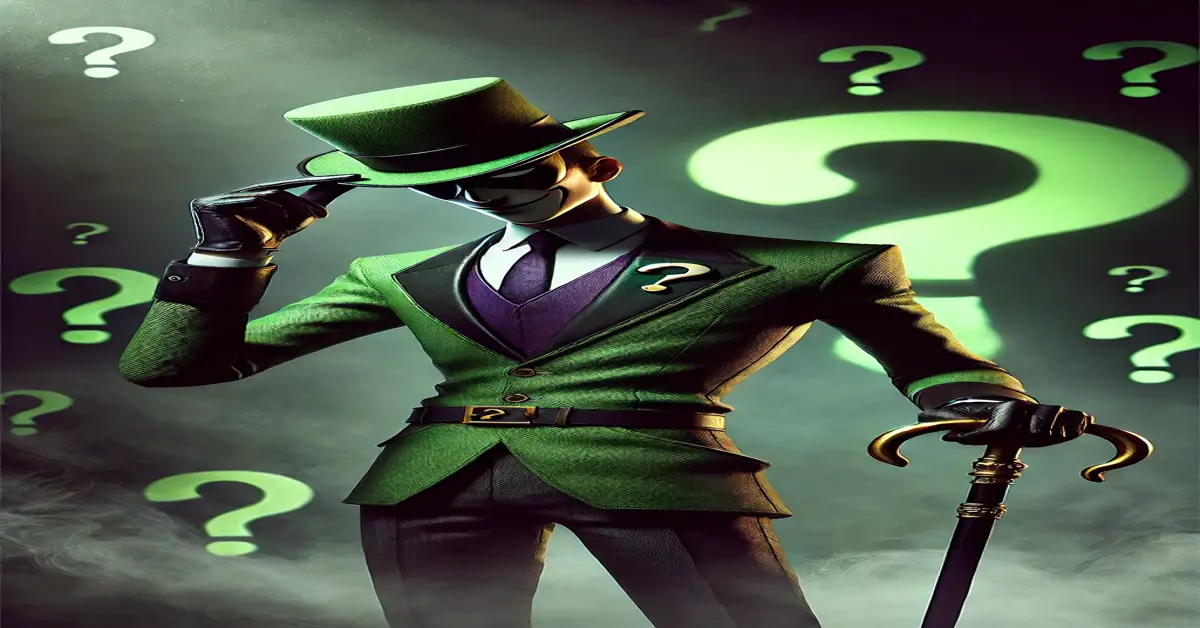Divergent thinking is crucial for several reasons:
- Creativity and Innovation: It spurs creative thinking by encouraging individuals to explore multiple possibilities and solutions. This is essential for innovation and problem-solving in complex scenarios (Psychology Today).
- Problem-Solving: Divergent thinking allows for the generation of numerous potential solutions to a problem, which can then be evaluated to find the most effective one. This approach is especially useful for problems that do not have a single correct answer (Killer Innovations Show).
- Adaptability: It helps individuals and organizations adapt their plans and processes to find appropriate new solutions, which is vital in dynamic and unpredictable environments (Airfocus).
- Innovation in Organizations: Employing divergent thinking processes is essential for moving organizations and societies forward, as it encourages looking beyond conventional methods and exploring new possibilities (Socap Global).
Overall, divergent thinking enhances creativity, problem-solving, adaptability, and innovation, making it a valuable skill in various contexts.
Riddles play a significant role in developing divergent thinking by challenging individuals to think creatively and explore multiple possible solutions. Unlike straightforward questions, riddles often have unexpected answers that require thinking outside the box. This encourages the brain to form new connections and consider alternative perspectives.
Engaging with riddles stimulates cognitive flexibility, allowing individuals to break free from conventional thought patterns and approach problems in innovative ways. By practicing with riddles, people enhance their ability to generate original ideas, adapt to new situations, and solve complex problems—key components of divergent thinking. This not only sharpens the mind but also fosters a more open and imaginative approach to learning and everyday challenges.
Divergent Thinking Riddles
Riddle 1:
The Mysterious $1 Purchase
A man walks into a store and sees an item marked at $1. He says to the store clerk, “I’ll take 100 of them.” The clerk says, “That will be $2.” The man pays $2 and leaves with 100 of the items.
What did the man buy?
Hint:
Think about items that cost less than a cent individually but are commonly sold in bulk. Also, consider that the price tags might represent something other than dollars.
Answer:
The man bought pennies (1-cent coins). He saw a sign indicating $1 per 50 pennies (or per roll). Therefore, 100 pennies cost $2.
Explanation:
- Interpreting the Price Tags:
- The item marked at $1 actually represents a bundle or roll of pennies.
- Each bundle contains 50 pennies.
- Calculating the Purchase:
- The man wants 100 pennies.
- Since each bundle contains 50 pennies, he needs 2 bundles.
- At $1 per bundle, the total cost is $2.
- Divergent Thinking Aspect:
- The riddle plays on the expectation that an item priced at $1 costs $1 per unit.
- It requires thinking beyond the face value and considering that the price might be for a quantity of items.
- Additionally, recognizing that the man is buying money (pennies) adds another layer of abstraction.
Riddle 2:
The Enigmatic Escape
You find yourself trapped in a room with no doors or windows. The room is empty except for a mirror and a wooden table. How do you escape?
Hint:
Think about puns and alternative meanings of words. Consider the properties of the items in the room in a non-literal sense.
Answer:
You look in the mirror, see what you saw, take the saw, cut the table in half, two halves make a whole, and then you climb through the hole to escape.
Explanation:
This riddle relies on wordplay and creative interpretation:
- Look in the mirror, see what you saw:
- The word “saw” is a homonym meaning both the past tense of “see” and a tool used for cutting.
- By looking in the mirror, you “see what you saw,” playing on the double meaning.
- Take the saw:
- Imagining that “saw” (the tool) is now available to you.
- Cut the table in half:
- Using the imaginary saw to cut the table.
- Two halves make a whole (hole):
- This is a pun on the words “whole” and “hole,” which are homophones.
- Two halves of the table make a “whole,” but here, it’s interpreted as a “hole.”
- Climb through the hole to escape:
- You “climb through the hole” you’ve conceptually created to get out of the room.
Divergent Thinking Aspect:
- The solution requires thinking beyond the literal constraints of the situation.
- It involves recognizing and applying multiple meanings of words.
- The riddle encourages creative problem-solving by combining physical actions with linguistic twists.
Riddle 3:
The Time-Traveling Clock
A man looks at his clock, and it shows 8:50. He has an important meeting in 10 minutes, but when he arrives at the meeting place, it’s only 8:00. He wasn’t early—the meeting was right on time. How is this possible?
Hint:
Consider the context of the clock and time zones. Think about how time can change when moving between places.
Answer:
The man crossed into a different time zone where the time was one hour earlier.
Explanation:
- The man saw 8:50 on his clock.
- He traveled to a location in a different time zone that’s one hour behind, so when he arrived, it was 8:00.
- The 10-minute duration refers to the time it took to get to the meeting place.
- Despite the clock showing a later time when he left, the time difference meant he arrived on time.
Divergent Thinking Aspect:
- This riddle requires thinking beyond the immediate surroundings.
- It encourages considering geographical factors like time zones.
- It challenges the assumption that time progresses uniformly in all contexts.
Riddle 4:
The Mysterious Parcel
A mail carrier delivers a package to a house. The recipient opens the package and finds something that causes him to immediately call the police. The mail carrier is arrested. What was in the package?
Hint:
Think about what could be in a package that would incriminate the mail carrier upon delivery. Consider personal items or evidence.
Answer:
The package contained the man’s stolen property, which the mail carrier had stolen and was returning as part of his route.
Explanation:
- The mail carrier had previously stolen items from the recipient.
- For some reason, he decided to mail the stolen items back.
- Upon receiving his own stolen property, the recipient realized the mail carrier was the thief.
- He called the police, and the evidence led to the mail carrier’s arrest.
Divergent Thinking Aspect:
- The riddle requires thinking about unusual circumstances.
- It challenges the solver to connect the act of delivery with the crime.
- It involves understanding motives and consequences beyond normal expectations.
Riddle 5:
The Unbreakable Code
You are given a piece of paper with the following sequence written on it:
Copy codeYYUR
YYUB
ICUR
YY4ME
What does this sequence mean?
Hint:
Read the letters out loud, and think about how they might sound when spoken quickly.
Answer:
The sequence reads: “Too wise you are, too wise you be, I see you are too wise for me.”
Explanation:
- When you read the letters aloud, they sound like words:
- YYUR → “Too wise you are”
- YYUB → “Too wise you be”
- ICUR → “I see you are”
- YY4ME → “Too wise for me”
- The letters and numbers are homophones for the words in the sentence.
Divergent Thinking Aspect:
- This riddle relies on phonetics and the sounds of letters and numbers.
- It requires the solver to think about how written characters can represent spoken language differently.
- It challenges conventional reading and encourages auditory interpretation.
Riddle 6:
The Unbreakable Chain
You have nine identical-looking gold coins. One of them is counterfeit and weighs slightly less than the real coins. You have a balance scale but can only use it twice. How can you determine which coin is the counterfeit?
Hint:
Think about dividing the coins into groups and using the process of elimination. Consider that you might not need to weigh every coin.
Answer:
- First Weighing:
- Divide the coins into three groups of three coins each: Group A, Group B, Group C.
- Weigh Group A against Group B.
- If they balance:
- The counterfeit coin is in Group C.
- Proceed to the second weighing.
- If they don’t balance:
- The lighter side contains the counterfeit coin.
- Proceed to the second weighing.
- If they balance:
- Second Weighing:
- From the group containing the counterfeit coin (as determined from the first weighing), select any two coins and weigh them against each other.
- If they balance:
- The third coin is the counterfeit.
- If they don’t balance:
- The lighter coin is the counterfeit.
- If they balance:
- From the group containing the counterfeit coin (as determined from the first weighing), select any two coins and weigh them against each other.
Explanation:
- First Weighing:
- By comparing two groups, you eliminate two-thirds of the coins in one weighing.
- If Groups A and B balance, the counterfeit is in Group C.
- If they don’t balance, you know the lighter side contains the counterfeit coin.
- Second Weighing:
- Narrow down the suspect coins from three to one.
- By weighing two of the three coins, you can determine if one is lighter or if they balance, indicating the unweighed coin is counterfeit.
Divergent Thinking Aspect:
- The riddle requires strategizing to minimize the number of weighings.
- Encourages thinking about grouping and elimination rather than weighing coins individually.
- Involves logical deduction and planning ahead.
Riddle 7:
The Magical Elevator
A man lives on the 15th floor of a building. Every day, he takes the elevator down to the ground floor to go to work. When he returns, he takes the elevator to the 10th floor and walks up the stairs the rest of the way, unless it’s raining or there are other people in the elevator. In those cases, he rides the elevator all the way up. Why does he do this?
Hint:
Consider the man’s physical limitations and how external factors (like rain or other people) might help him overcome them.
Answer:
The man is short and can only reach the button for the 10th floor. When it’s raining, he uses his umbrella to press the higher buttons, and when others are present, he asks them to press the 15th-floor button for him.
Explanation:
- The man cannot reach the buttons above the 10th floor due to his height.
- On rainy days, he uses his umbrella to press the 15th-floor button.
- When others are in the elevator, he asks them to press the button for him.
- This explains why he sometimes walks from the 10th floor and other times rides all the way up.
Divergent Thinking Aspect:
- The riddle relies on recognizing the unstated limitation (his height).
- Requires thinking about how ordinary objects (umbrella) can extend reach.
- Encourages considering social interactions (asking others for help).
Riddle 8:
The Invisible Man’s Hat
You are in a room with three light switches connected to three light bulbs in another room. Once you enter the bulb room, you cannot return to the switch room. How can you determine which switch controls each bulb?
Hint:
Think about the properties of light bulbs beyond just being on or off. Consider how you might use time and touch to gather more information.
Answer:
- Turn on Switch 1 and leave it on for a few minutes.
- Turn off Switch 1 and immediately turn on Switch 2.
- Go into the bulb room.
- The bulb that is on is connected to Switch 2.
- The bulb that is off and warm is connected to Switch 1.
- The bulb that is off and cold is connected to Switch 3.
Explanation:
- By leaving Switch 1 on for a while, the bulb heats up.
- Turning it off and turning on Switch 2 means when you enter the bulb room:
- The bulb currently lit corresponds to Switch 2.
- The warm, unlit bulb corresponds to Switch 1.
- The cold, unlit bulb corresponds to Switch 3.
Divergent Thinking Aspect:
- Requires thinking beyond visual cues (light on/off) to include tactile information (bulb warmth).
- Encourages creative problem-solving by utilizing time and the physical properties of objects.
- Demonstrates thinking outside the conventional approach.





